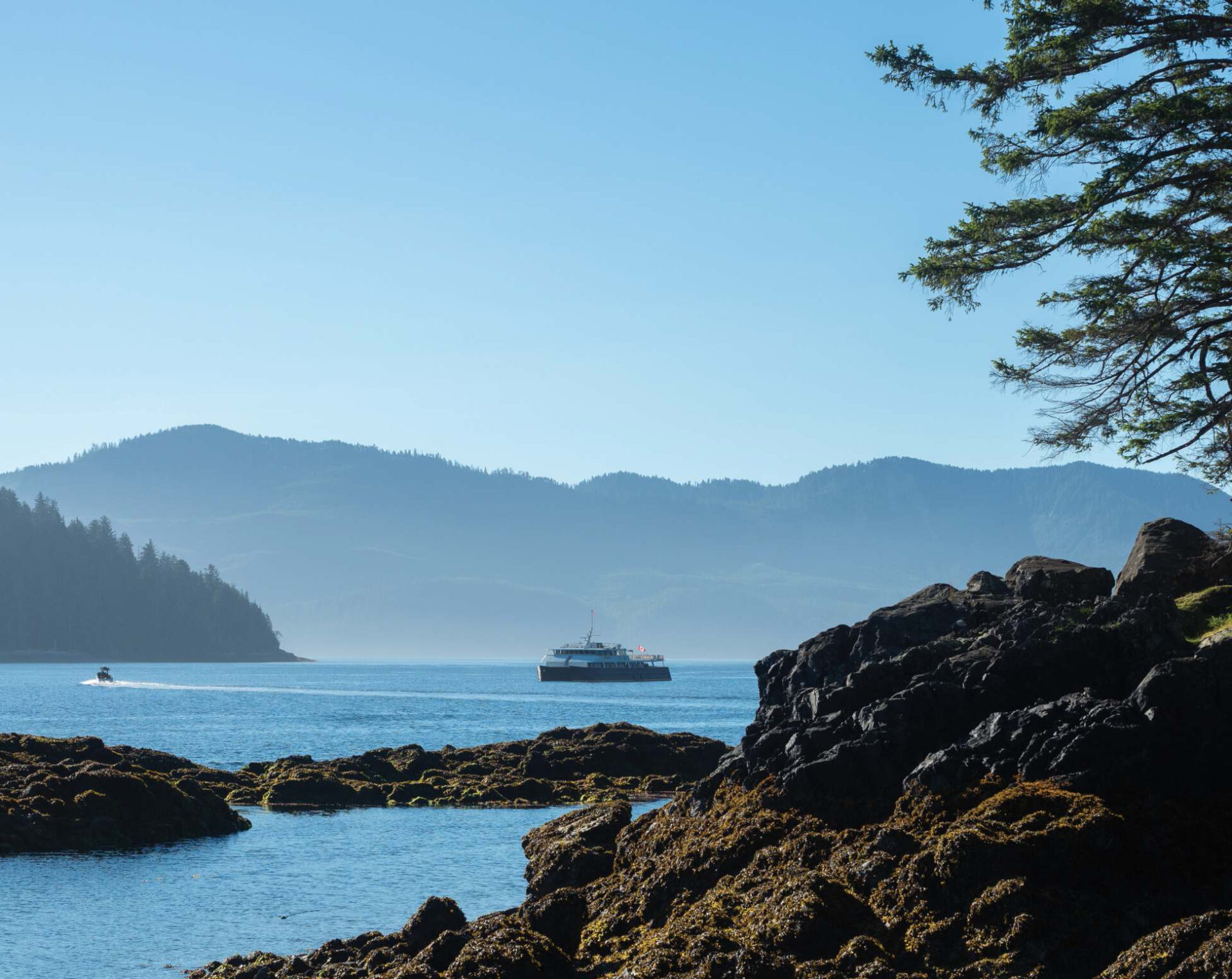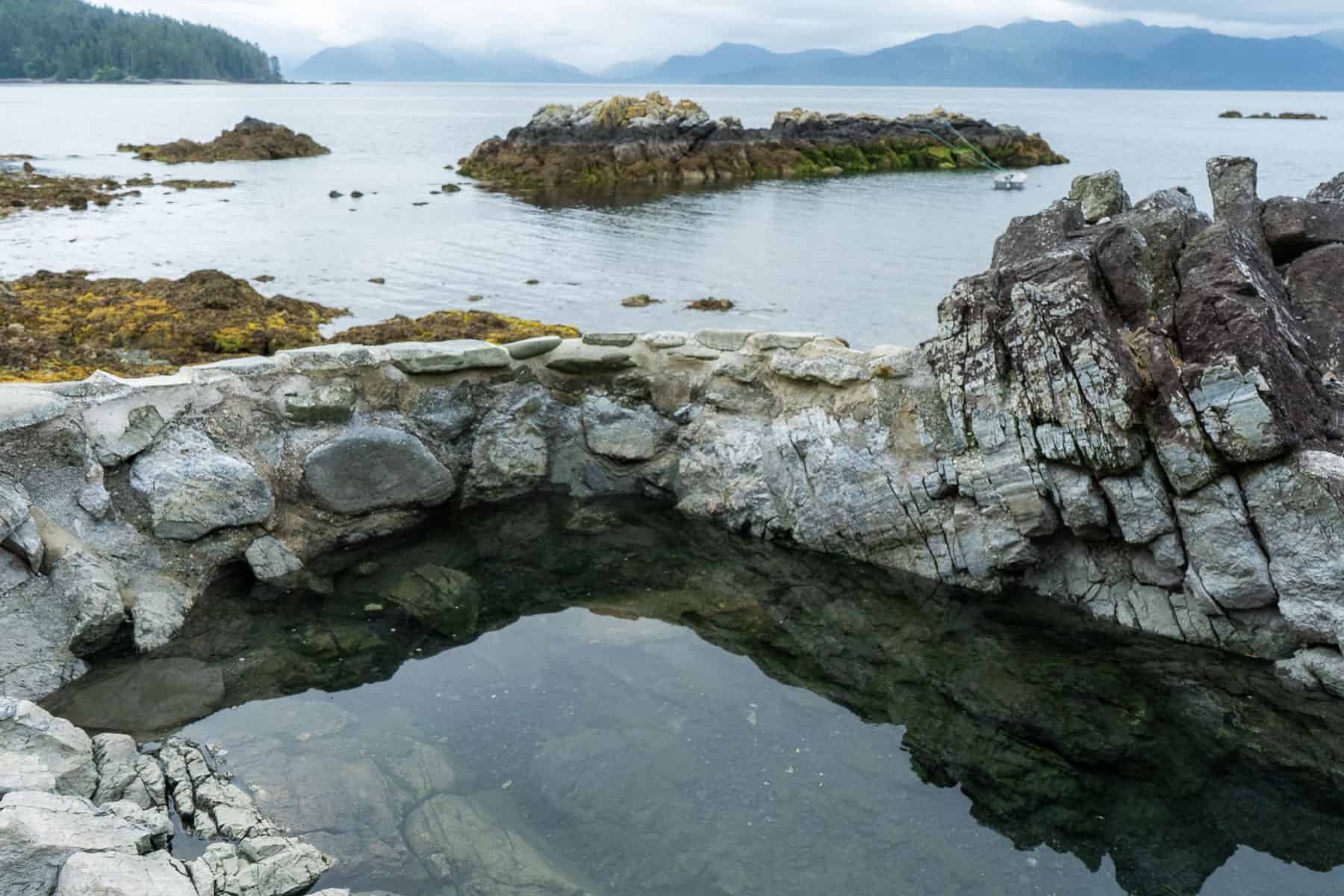Exploring Gwaii Haanas: A Haida Heritage Site

Gwaii Haanas, a place that bears a name rich with history and culture, is a national treasure that intertwines the natural beauty of British Columbia's Queen Charlotte Islands with the vibrant heritage of the Haida people. This unique region is designated as Gwaii Haanas National Park Reserve, National Marine Conservation Area Reserve, and Haida Heritage Site. In this comprehensive guide, we will dive deep into the wonders of Gwaii Haanas, exploring its history, natural beauty, and the important role it plays in conserving marine ecosystems.
Why Gwaii Haanas is Worth Exploring
Gwaii Haanas is a true gem, often referred to as "Haida Gwaii's Southern Gateway." This region is exceptional for several reasons, making it a destination worth exploring for nature enthusiasts, history buffs, and anyone seeking a unique cultural experience.
1. Natural Beauty and Biodiversity

Gwaii Haanas boasts a stunning landscape characterized by lush temperate rainforests, pristine beaches, and rugged coastlines. Its 138 islands are teeming with diverse marine life, including whales, sea lions, and seabirds. The terrestrial and marine ecosystems within the park are vital to the overall health of British Columbia's coastal region.
2. Rich Cultural Heritage
For the Haida people, Gwaii Haanas is more than just a place; it's an integral part of their heritage. The area is home to Haida village sites and ancient totem poles, providing a glimpse into the living culture of the Haida people. The relationship between the Haida Nation and the government of Canada is exemplified through the Gwaii Haanas Agreement, which established a unique cooperative management model.
3. UNESCO World Heritage Site
Gwaii Haanas was declared a UNESCO World Heritage Site in 1981, recognizing its outstanding cultural and natural significance. This designation reflects its importance not only to Canada but to the entire world.
4. Conservation and Protection
The Gwaii Haanas Marine Reserve protects the rich marine environment, ensuring the survival of various marine species. The area also plays a critical role in the conservation of marine mammals, making it a sanctuary for whales, dolphins, and more.
Now that we've established why Gwaii Haanas is worth exploring, let's delve deeper into its fascinating aspects.
Exploring Gwaii Haanas: An Outline

1. Gwaii Haanas: A Historical Overview
- What is the significance of Gwaii Haanas to the Haida people?
- How did the region's history shape its current status as a protected area?
2. The Unique Coexistence of Nature and Culture
- How does Gwaii Haanas preserve Haida culture while protecting its natural beauty?
- What role do the Haida Gwaii Watchmen play in safeguarding the region?
3. Gwaii Haanas' Marine Conservation Efforts
- What marine ecosystems are found in Gwaii Haanas?
- How does the area contribute to marine conservation and research?
4. British Columbia's Coastal Jewel: Gwaii Haanas Islands
- What makes the islands of Gwaii Haanas unique?
- What wildlife can you expect to encounter on the islands?
5. The Gwaii Haanas Agreement: A Model for Cooperation
- How does the Gwaii Haanas Agreement work to manage the region?
- What is the significance of the cooperation between the Haida Nation and government entities?
6. Gwaii Haanas' Role in Marine Mammal Conservation
- What marine mammals are commonly found in Gwaii Haanas?
- How does the region contribute to the protection of these species?
7. Conservation Success Stories in Gwaii Haanas
- What are some notable conservation achievements in Gwaii Haanas?
- How has the region evolved over the years in terms of conservation efforts?
8. Gwaii Haanas: A UNESCO World Heritage Site
- What criteria led to Gwaii Haanas' designation as a UNESCO World Heritage Site?
- How does this status impact the area's preservation and recognition on a global scale?
9. Cultural Significance of Gwaii Haanas
- What are some of the key cultural heritage sites within Gwaii Haanas?
- How does Gwaii Haanas contribute to the living culture of the Haida people?
10. Gwaii Haanas' Contribution to Research and Education
- What research opportunities are available in Gwaii Haanas?
- How does the park contribute to environmental education and awareness?
Now, let's embark on a journey to explore each of these aspects of Gwaii Haanas in more detail.
1. Gwaii Haanas: A Historical Overview

Gwaii Haanas, formerly known as the Queen Charlotte Islands, has a deep and rich history that dates back centuries. This region is the traditional territory of the Haida people, who have inhabited these lands and waters for thousands of years. The name "Gwaii Haanas" itself means "Islands of Beauty" in the Haida language, a testament to the natural splendor found here.
Evidence of Haida occupation in the area includes ancient village sites, totem poles, and other cultural artifacts. These sites provide valuable insights into the Haida way of life and their connection to the land and sea.
The history of Gwaii Haanas also includes contact with European explorers and settlers, which brought significant changes to the region. Understanding this history helps us appreciate the complex relationship between the Haida Nation and the government of Canada, a relationship that led to the establishment of the Gwaii Haanas Agreement and the cooperative management of this remarkable area.
2. The Unique Coexistence of Nature and Culture
Gwaii Haanas is a place where nature and culture coexist harmoniously. The area's unique management model, as outlined in the Gwaii Haanas Agreement, reflects this coexistence by recognizing the importance of both natural and cultural values.
The Haida Gwaii Watchmen program plays a pivotal role in safeguarding Gwaii Haanas. Watchmen are Haida people who live on-site during the summer months, serving as cultural interpreters and guardians of the land and sea. They share their knowledge of Haida culture and history with visitors while ensuring the protection of sensitive cultural sites.
The presence of Haida village sites and totem poles amidst the stunning natural backdrop of Gwaii Haanas creates a powerful connection between the past and the present. Visitors can explore these sites and gain a deeper understanding of the enduring Haida culture.
3. Gwaii Haanas' Marine Conservation Efforts
Gwaii Haanas is not only a land of lush forests and towering totem poles but also a guardian of marine life. The region's marine ecosystems are diverse and vital to the health of the surrounding ocean.
The Gwaii Haanas Marine Reserve is a protected area within the park that focuses on marine conservation. It serves as a sanctuary for marine mammals, including whales, dolphins, and sea lions. The reserve also helps protect seabird populations, making it an essential hub for bird enthusiasts.
Research conducted in Gwaii Haanas contributes to our understanding of marine ecosystems and supports conservation efforts beyond its borders. The park's remote location and pristine environment make it an ideal place for scientific study and monitoring.
4. British Columbia's Coastal Jewel: Gwaii Haanas Islands

Gwaii Haanas is an archipelago comprised of 138 islands, each with its unique character and natural wonders. These islands are scattered along the southernmost part of Haida Gwaii and are accessible only by boat or seaplane, adding to their sense of remoteness and adventure.
The islands are home to a wide range of wildlife, both on land and in the surrounding waters. Visitors can expect to encounter majestic whales, playful sea lions, and a variety of seabirds. The marine-rich environment is a testament to the importance of protecting these islands and the surrounding waters.
Exploring the islands of Gwaii Haanas offers a unique opportunity to immerse oneself in pristine nature and witness the unspoiled beauty of British Columbia's coastal region.
5. The Gwaii Haanas Agreement: A Model for Cooperation
The Gwaii Haanas Agreement is a groundbreaking partnership between the Haida Nation and the government of Canada. This agreement, signed in 1993, established a cooperative management model for Gwaii Haanas, emphasizing shared decision-making and mutual respect.
Under the agreement, the Gwaii Haanas Archipelago Management Board was created, consisting of equal representation from the Haida Nation and the federal government. This board oversees the management of the park and ensures that both cultural and ecological values are upheld.
The Gwaii Haanas Agreement serves as a model for cooperative management in protected areas worldwide, demonstrating how diverse stakeholders can work together to protect and preserve natural and cultural heritage.
6. Gwaii Haanas' Role in Marine Mammal Conservation
Gwaii Haanas is a critical sanctuary for marine mammals, making it a significant contributor to marine mammal conservation efforts in the region. The waters surrounding the islands provide essential habitat and feeding grounds for various species.
Whales are among the most iconic marine mammals in Gwaii Haanas. Visitors may have the chance to witness the awe-inspiring sight of humpback whales breaching or orcas hunting for prey. Additionally, sea lions and dolphins are commonly spotted, adding to the marine diversity of the area.
Conservation initiatives within Gwaii Haanas, such as monitoring programs and habitat protection, play a vital role in ensuring the survival of these magnificent creatures.
7. Conservation Success Stories in Gwaii Haanas
Over the years, Gwaii Haanas has witnessed significant conservation successes. These accomplishments are a testament to the dedication of the Haida Nation, the Canadian government, and organizations like Parks Canada and Fisheries and Oceans Canada.
One notable success story is the recovery of the ancient seabird colonies within Gwaii Haanas. Through habitat restoration and protection, these colonies have thrived, bolstering seabird populations and contributing to the overall health of marine ecosystems.
Another success lies in the protection of sensitive cultural sites. The cooperative management approach has ensured that these sites are preserved for future generations while allowing visitors to engage with Haida culture and history respectfully.
8. Gwaii Haanas: A UNESCO World Heritage Site
Gwaii Haanas' designation as a UNESCO World Heritage Site is a significant recognition of its outstanding cultural and natural values. UNESCO selected Gwaii Haanas for its exceptional significance to humanity and the planet as a whole.
This status brings global attention to Gwaii Haanas, emphasizing the need for its preservation and protection. It also encourages responsible tourism practices, ensuring that visitors appreciate and respect the area's unique qualities.
As a UNESCO World Heritage Site, Gwaii Haanas contributes to the worldwide effort to safeguard culturally and ecologically important places.
9. Cultural Significance of Gwaii Haanas
Gwaii Haanas is a place where the Haida people's culture and heritage come to life. The park is dotted with cultural heritage sites, including village sites and ancient totem poles that offer a glimpse into the rich history of the Haida Nation.
These sites serve as a testament to the enduring culture of the Haida people and their connection to the land and sea. Visitors can explore these sites while gaining a deeper understanding of the Haida way of life and the significance of these cultural treasures.
Gwaii Haanas also supports the living culture of the Haida people, allowing for the continuation of traditional practices and the celebration of their heritage.
10. Gwaii Haanas' Contribution to Research and Education
Gwaii Haanas is not only a place of natural and cultural significance but also a hub for research and education. The park offers numerous opportunities for researchers to study its unique ecosystems, contributing valuable insights to conservation efforts.
Environmental education programs within Gwaii Haanas aim to raise awareness about the importance of preserving the region's natural and cultural heritage. These programs provide visitors with a deeper appreciation for the park's values and the need for responsible stewardship.
By engaging in research and education, Gwaii Haanas plays a crucial role in advancing our understanding of the environment and fostering a sense of responsibility for its protection.
Closing Thoughts

Gwaii Haanas, with its blend of natural beauty, cultural heritage, and conservation efforts, is a destination like no other. As a national marine conservation area reserve, national park reserve, and Haida heritage site, it stands as a testament to the significance of protecting both land and sea.
Whether you're drawn to its lush rainforests, intrigued by its cultural treasures, or inspired by its conservation initiatives, Gwaii Haanas has something to offer everyone. As you explore this remarkable region, remember to do so with respect for its values and a commitment to preserving its unique beauty for generations to come.
Key Takeaways
- Gwaii Haanas is a national treasure, known as Gwaii Haanas National Park Reserve, National Marine Conservation Area Reserve, and Haida Heritage Site.
- It offers a unique blend of natural beauty and cultural heritage, making it a destination worth exploring.
- The Gwaii Haanas Agreement is a pioneering cooperative management model between the Haida Nation and the government of Canada.
- Gwaii Haanas is a sanctuary for marine life, including whales, sea lions, and seabirds.
- Its UNESCO World Heritage Site status highlights its global significance.
- The park contributes to both research and environmental education, advancing our understanding of the environment.
Embark on a journey to Gwaii Haanas, and you'll discover a place where the past and the present, the land and the sea, and culture and nature converge in a harmonious embrace. It's a living testament to the importance of preserving our planet's most precious treasures.
